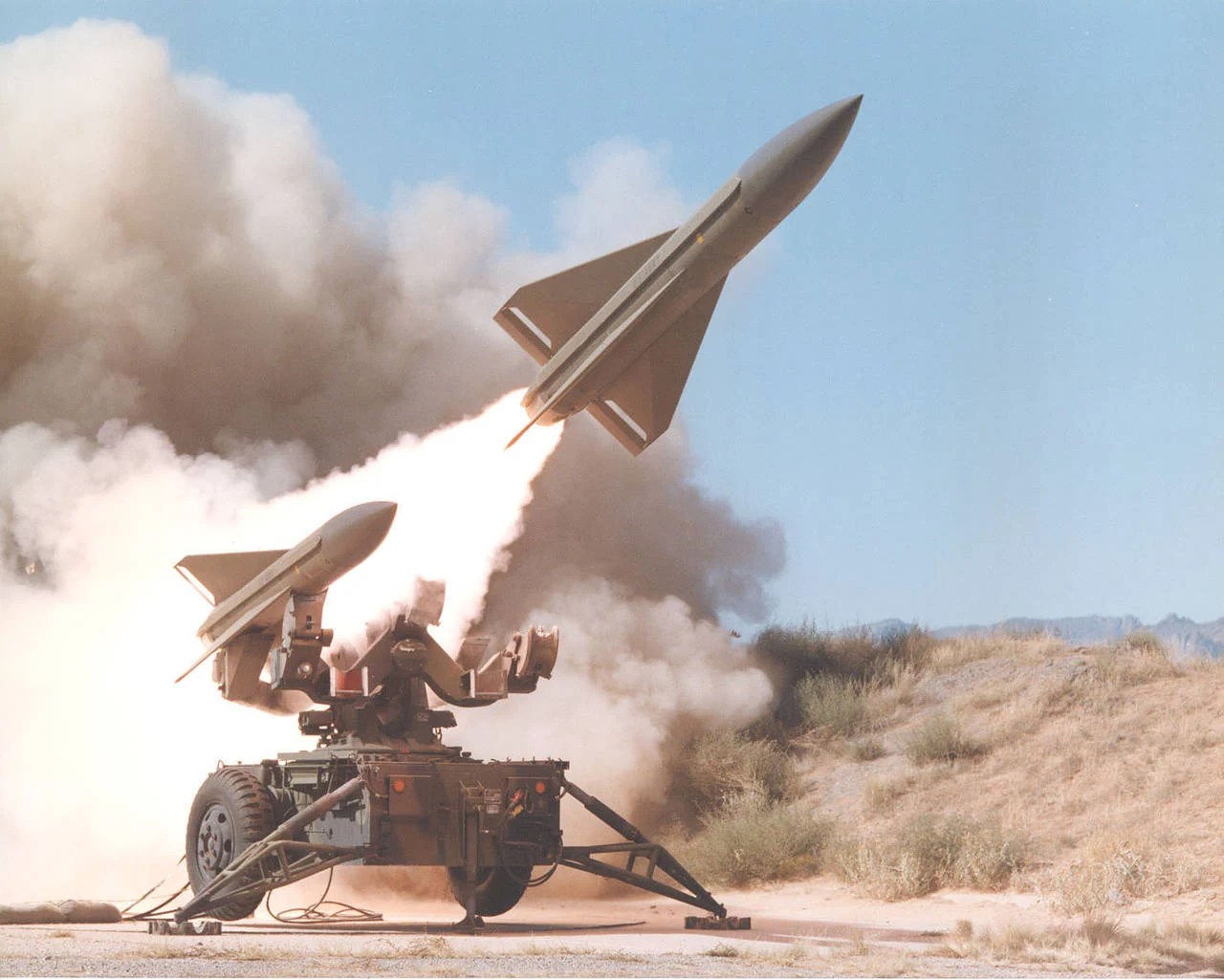To combat the onslaught of Russian cruise missiles and drones on the Ukrainian military, power plants, and civilian-military infrastructure, the United States is “considering” sending its HAWK surface-to-air missile (SAM) systems to Kyiv.
The Cold War-era missile will be another addition to SAM systems like the S-300 and German-made IRIS-T that Ukraine presently has. The National Air-to-Surface Missile System (NASAMS) is also on its way to Ukraine.
Russia has extensively used Iranian Shahed-136 drones (rechristened as Geran-2) to menacing effect in Ukraine. While many have been shot down, an equal number have been recorded hitting their targets in Kyiv and Ukrainian armor and artillery formations.
The EurAsian Times recently reported on a video showing a Man-Portable Air Defense (MANPAD) narrowly missing an oncoming Geran-2 despite a straight, clear shot in Kyiv. Experts attributed it to the drone’s absence of any infrared or radio frequency emission for the missile to lock on.
The cheap, mass-produced expendable drones, therefore, actually hold an advantage against the modern SAM systems like S-300, Buk, or Osa, which are more effective against medium and low-altitude aircraft, helicopters, and other advanced drones. EurAsian Times wrote about Russia possibly receiving the even more advanced Arash-2 drone.
Powered by a small jet engine, these drones are expected to dodge even SAM/Air Defense fire, possibly by flying at lower altitudes during the last leg of their journey toward a target. Experts believe the Arash-2 would be most effective by flying in swarms, where it can overwhelm air defenses.
Ukrainian President Vladimir Zelensky had appealed to the West and the North Atlantic Treaty Organization (NATO) for an “air shield” over Ukraine two weeks ago, following relentless Russian missile barrages over Kyiv’s energy infrastructure.
This was in retaliation to the attack on the Crimean Bridge that Moscow claimed was Ukraine’s handiwork of “terrorist tactics.”
The HAWK Missile System
NATO Secretary Jens Stoltenberg, on October 13, announced Spain was providing Ukraine with four HAWK missile launchers. On Tuesday, Reuters quoted two US officials saying they were “considering” sending older Hawk systems “from storage” to help Ukraine “defend against Russian drone and cruise missile attacks.”
The Raytheon MIM-23 HAWK is considered the precursor to the Patriot missile defense system, the latter of which the US ruled out sending to Ukraine.
“The United States would likely initially send interceptor missiles for the HAWK system to Ukraine because it was unclear if enough US launchers were in good repair, one US official told Reuters. The US systems have been in storage for decades,” Reuters report said. It is unclear whether the HAWK would be tested on interceptor missiles in Ukraine.
The medium-range air defense system was inducted into the US Army in 1960 and, subsequently, the US Marine Corps (USMC). The platform was repeatedly modernized and was in service with the US Army until 1994 and the Marine Corps until 2002. Japan and Iran too operated the system, besides the US.
However, it is not clear how many platforms the US intends to send to Ukraine.
The missile transfer would occur under the Presidential Drawdown Authority (PDA), which authorizes President Biden to directly transfer weapons platforms from existing stocks under emergency provisions without Congressional approval.
While PDA is being considered later this week, reports said it was unclear if HAWK missiles would be included.

While the missile has a range of 45 kilometers, the radar can track targets at 100 kilometers. It can fly at Mach 2.4 and reach a maximum altitude of 20 kilometers.
A Ukrainian military statement following the announcement came close to the above kinematic figures: “Initially, the system was developed to destroy aircraft. Later it was finalized to intercept missiles.
The first versions of the system had a range of 25 kilometers for aerial targets and an altitude of 14 kilometers. After modernization, the maximum target interception range increased to 40 kilometers with a maximum interception altitude of 18 kilometers.”
Will HAWK Hunt Russian, Iranian Missiles & Drones?
Newsweek quoted Tom Karako, director of the Missile Defense Project at the Center for Strategic and International Studies (CSIS), indicating that the HAWK cannot be expected to turn around the battlefield in Ukraine’s favor.
“(The HAWK systems are) certainly much older (than other air defense systems),” Karako said, adding that they might be helpful against fixed or rotary wing aircraft.
“The real takeaway is it shows that the United States is scrounging whatever capability we can prudently provide (to Ukraine). HAWK systems are essentially museum pieces. Even if it’s older and limited, it can have a deterrent effect for Russian aircraft, if nothing else,” Karako added.
- The author can be reached at satamp@gmail.com
- Follow EurAsian Times on Google News




